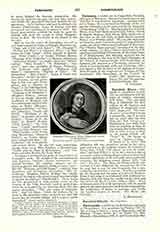

Parnassus, a titular see in Cappadocia Secunda, suffragan of Mocessus. Situated between Ancyra and Archelais, it was formerly important. Another route led to Nyssa. It is mentioned by Polybius (XXV, iv) and the Itineraries; in the sixth century by Hierocles, “Synecdemus” (700, 7). Hamilton places it at Kotch Hissar, near Touz Gheul (ancient Lake Tatta), vilayet of Angora; Ramsay (Asia Minor, 298), northeast of this lake on the left bank of Kizil Irmak (ancient Halys), near Tchikin Aghyl. The see first depended on Caesarea; under Valens it passed to Cappadocia Secunda; and about 536 was made suffragan of Mocessus. The “Notitiae Episcopatuum” mention it in the thirteenth century. Le Quien (Oriens christianus, I, 415) mentions nine bishops: Pancratius, at the Arian Council of Philippopolis, 344; Hypsius, replaced by the Arian Ecdicius in the time of St. Basil; Olympius, at the Council of Constantinople, 381; Eustathius, at Ephesus, 341, deposed as a Nestorian, retracted, assisted at Constantinople (448) and Chalcedon (451); and signed in 458 the letter of the bishops of Cappadocia Secunda to the Emperor Leo; Pelagius, at Constantinople, 538; Eustathius, at the Council “in Trullo”, 692; Stephanus, at Nicaea, 787; and Theognostus, at Constantinople, 869.
S. PÉTRIDÈS

